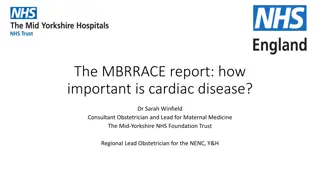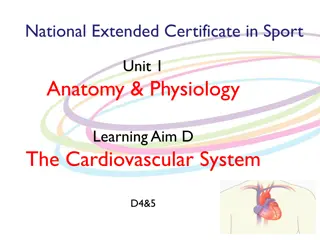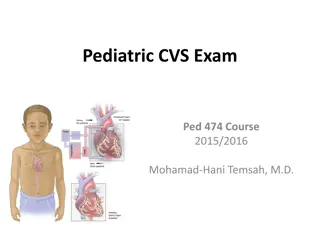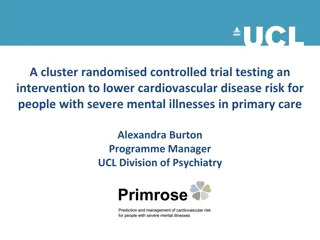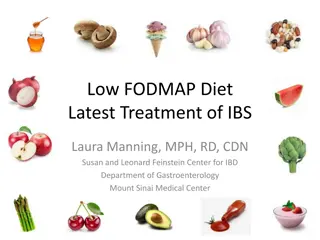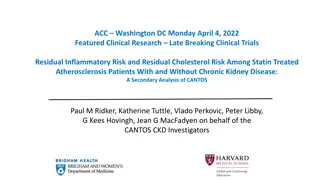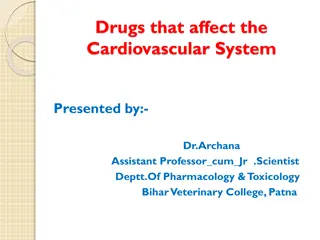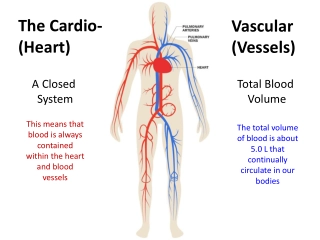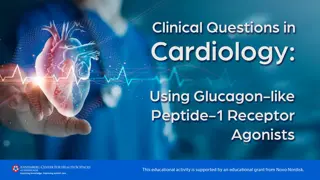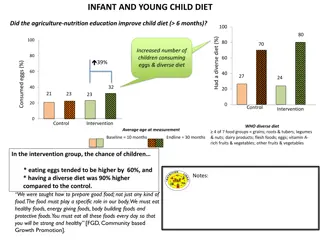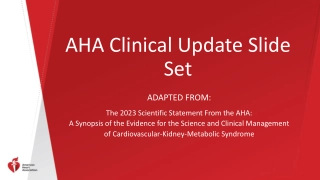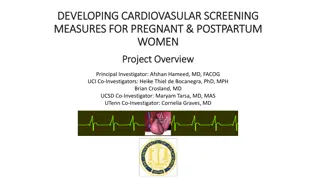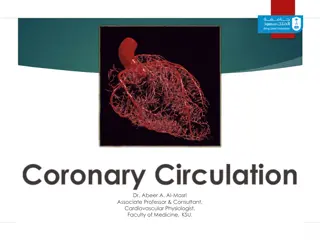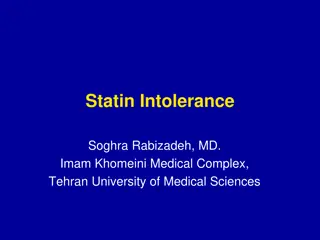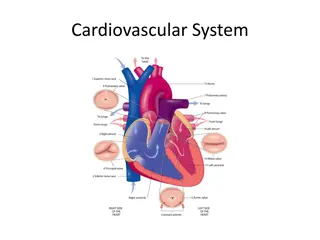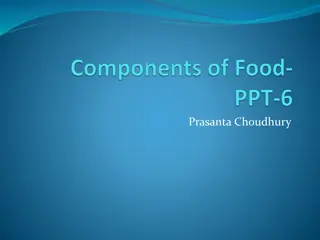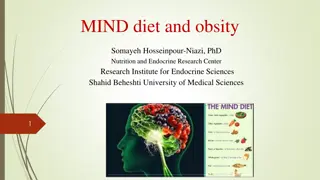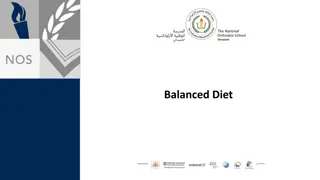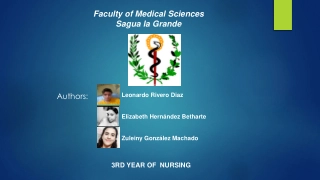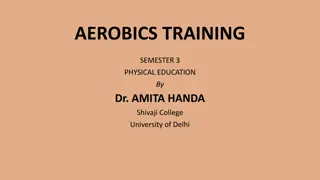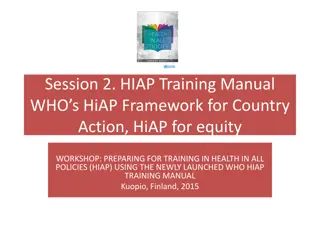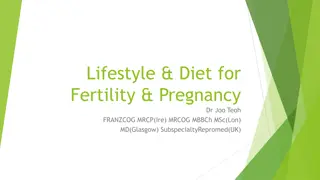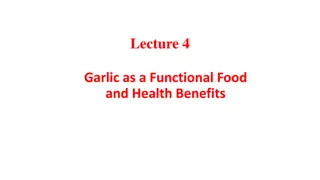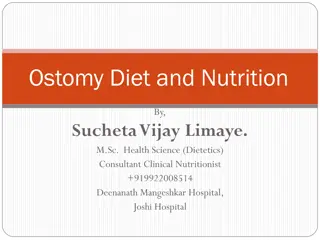Impact of Diet on Cardiovascular Health
The impact of diet on the cardiovascular system is significant, with a high intake of LDL leading to clogged arteries and increased risk of Coronary Heart Disease. Regular exercise brings about positive changes in the cardiovascular system, enhancing heart function and oxygen delivery. Immediate benefits of exercise on the cardiovascular system include increased heart rate, leading to improved oxygen supply to muscles. These changes contribute to better cardiovascular performance and overall health.
Download Presentation

Please find below an Image/Link to download the presentation.
The content on the website is provided AS IS for your information and personal use only. It may not be sold, licensed, or shared on other websites without obtaining consent from the author. Download presentation by click this link. If you encounter any issues during the download, it is possible that the publisher has removed the file from their server.
E N D
Presentation Transcript
Starter The heart is a muscle and it s own blood supply comes from the coronary arteries. A diet high in Low Density Lipoproteins LDL s clogs up these arteries. This is known as Coronary Heart Disease Describe the impact of diet on the cardiovascular system (3) . . . . . . . . . . . . . . . . . . . . . . . . . . . . . . . . . . . . . . . . . . . . . . . . . . . . . . . . . . . . . . . . . . . . . . . . . . . . . . . . . . . . . . . . . . . . . . . . . . .. . . . . . . . . . . . . . . . . . . . . . . . . . . . . . . . . . . . . . . . . . . . . . . . . . . . . . . . . . . . . . . . . . . . . . . . . . . . . . . . . . . . . . . . . harder and it would also restrict blood flow to the heart, therefore it would not be as efficient. The cardiovascular system includes the heart and blood vessels. A diet high in LDLS, for example, fatty meats and butter, can clog up the blood vessels and cause coronary heart disease. This means the heart would have to work unnecessarily
What is the cardiovascular system The heart and blood vessels The more efficient the CV system the better performance as more oxygen can be delivered to the muscles
Key words Heart Rate (HR) beats per minute Stroke Volume (SV) amount of blood leaving the heart each beat (more forceful contraction increases SV) Cardiac Output CO (1 min) = HR X SV Systolic Blood Pressure the pressure on the artery walls when blood is being pumped out of the heart
Long term changes to CV system after regular exercise Immediate changes to CV system when exercising * Increase in size and strength of heart **Increase in maximum stroke volume **Increase in maximum cardiac output ***Lower resting heart rate ****Faster return to resting heart rate Increase in capillarisation Increase in red blood cells Increase in heart rate Increase in stroke volume Increase in systolic blood pressure Benefits of these changes Benefits of these changes Increased oxygen delivery and removal of Carbon dioxide Increased blood flow In general most changes lead to Increased oxygen delivery and removal of Carbon dioxide Outcomes to specific changes * Reduces chance of CHD ** Increases blood flow, therefore more 02 *** You can work harder before reaching MHR (where fatigue would occur) **** You can repeat high intensity work more quickly
Exercise causes an increase in demand on the cardiovascular system. Explain one benefit of these immediate changes to a performer (3marks) Describe one benefit Explain the benefit to performer Explain the outcome on performance One benefit is increased heart rate. The benefit of this is increased oxygen delivery to the muscles. This would increase performance because a performer would be able to work at a higher intensity for longer periods of time
Identify and explain two long term benefits of regular training on the cardiovascular system (3marks) Describe one long term benefit Explain how this benefits performer Repeat Increased size and strength of heart which reduces the chance of coronary heart disease. Increased production of red blood cells, therefore increased increase of oxygen that can be carried in the blood.
One long term adaptation of regular participation in physical activity is capillarisation. Explain the benefit of an increase in capillarisation to a hockey player (3marks) Describe what capillarisation is. Explain how the benefit Give an example of how this would benefit a hockey player in a game Increase in capillarisation means more small blood vessels in the muscles. This means more oxygen can be delivered to the muscles. Hockey is mostly an aerobic activity, therefore this will help the hockey player meet the demands of the game






